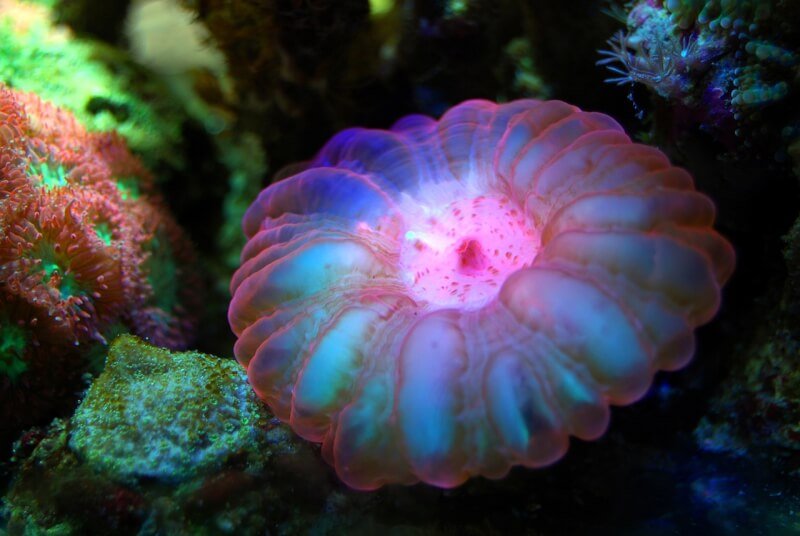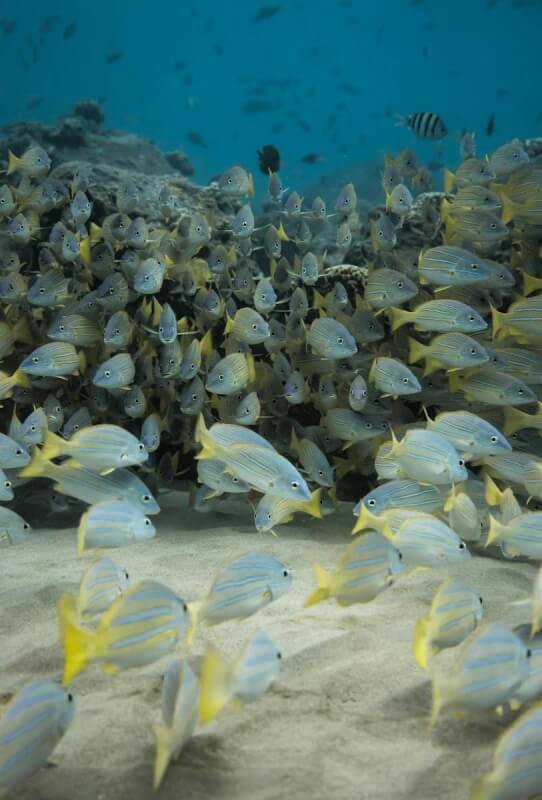Imagine stepping into a mesmerizing world filled with vibrant colors, graceful movements, and the soothing sound of water gently trickling. In this article, we invite you to embark on an awe-inspiring journey as we explore the captivating beauty of biotope aquariums. These living masterpieces, carefully designed to mimic specific natural habitats, offer a unique window into the wonders of aquatic ecosystems. Get ready to be transported to tranquil rivers, lush forests, and mesmerizing coral reefs as we delve into the artistry and serenity of biotope aquariums.

Biotope Aquariums
What are Biotope Aquariums?
Biotope aquariums are a unique and captivating way to recreate natural aquatic habitats within a confined space. They aim to closely mimic the conditions found in specific geographical regions, such as lakes, rivers, or even oceanic ecosystems. By carefully selecting the appropriate fish, plants, and decor, these aquariums provide a window into the underwater world, offering enthusiasts a chance to observe and appreciate the beauty and intricacy of nature.
Why are Biotope Aquariums Popular?
Biotope aquariums have gained immense popularity in recent years due to their ability to provide a more natural and realistic environment for aquatic creatures. They offer a refreshing alternative to the conventional community tank setup, allowing hobbyists to create a more focused and detailed representation of a specific biotope. This specialized approach appeals to those seeking a deeper connection with nature and a greater sense of authenticity within their aquariums.
Benefits of Biotope Aquariums
One of the significant benefits of biotope aquariums is the educational value they offer. By recreating specific habitats, these aquariums provide a unique opportunity to study and learn about the natural environment and the various species that reside within it. Additionally, these tanks contribute to the conservation effort by raising awareness about threatened or endangered species and their ecosystems.
Another advantage of biotope aquariums is the preservation of natural balance. By carefully selecting compatible species and recreating their natural living conditions, these aquariums promote biodiversity and help maintain the delicate ecological balance of a particular habitat. This focus on sustainability and ethical fishkeeping practices ensures the well-being of the inhabitants and the long-term health of the aquarium.
Creating a Biotope Aquarium
Selecting the Biotope
Choosing the right biotope is a crucial first step in creating a successful biotope aquarium. Consider your interests and preferences, as well as the suitability of the chosen biotope for the fish and plants you wish to keep. Researching the natural habitat conditions and the species that inhabit it will guide you in making an informed decision.
Researching the Biotope
Thorough research is essential to gain a deep understanding of the chosen biotope’s water parameters, temperature range, vegetation, and animal species. Consult reputable sources, such as scientific papers, books, or online forums, to gather accurate information. By acquiring comprehensive knowledge, you can better replicate the specific conditions necessary for the well-being of your aquatic inhabitants.
Choosing the Right Fish and Plants
Once you have selected a biotope, it is crucial to carefully choose the fish and plants that naturally coexist within that ecosystem. Consider the compatibility of the species, their specific requirements, and their behavior. Opt for species that are more readily available, sustainable, and easily adaptable to captive environments.
Setting Up the Aquarium
Setting up a biotope aquarium involves recreating the environmental conditions found in the chosen habitat. Start by preparing a suitable substrate, such as gravel or sand, that mimics the natural substrate of the biotope. Introduce rocks, driftwood, or other decor elements that resemble those found in the wild. Additionally, ensure the filtration system, water heating and lighting equipment, and water chemistry are appropriate for the chosen biotope.
Maintaining a Biotope Aquarium
Water Quality Management
Maintaining pristine water quality is vital for the success of a biotope aquarium. Regularly test the water parameters, including pH, ammonia, nitrite, and nitrate levels, and take necessary actions to ensure they remain within the desired range. Regular water changes and proper filtration are critical components in maintaining a healthy and stable aquatic environment.
Temperature and Lighting
Temperature and lighting play significant roles in replicating natural conditions. Research and understand the temperature range required for the species in your biotope, and invest in a reliable aquarium heater to maintain a consistent temperature. Select appropriate lighting fixtures to simulate natural day and night cycles, considering the light requirements of the plants and the behavioral patterns of the fish.
Feeding and Care
Feeding your aquatic inhabitants a balanced and species-appropriate diet is essential for their overall health and well-being. Research the dietary preferences of the species in your biotope and provide a varied diet that includes high-quality commercial fish food, live or frozen foods, or even vegetation. Additionally, ensure you monitor for signs of illness or stress and promptly address any issues that arise.
Regular Maintenance
Regular maintenance is crucial to the long-term success of a biotope aquarium. Inspect the aquarium for any signs of wear, damage, or malfunctioning equipment. Perform routine cleaning of the tank, including removing debris, uneaten food, and waste. Trim and prune plants as necessary, and monitor the overall health and behavior of the fish and plants.
Enhancing the Aesthetics
Aquascaping and Decor
Aquascaping refers to the art of arranging plants, rocks, driftwood, and other decor elements to create visually pleasing and natural-looking landscapes within the aquarium. Utilize the research conducted during the biotope selection phase to replicate the natural scenery of the chosen habitat. Experiment with different layouts, incorporating vertical elements and creating areas of varying heights and depths to add depth and visual interest.
Choosing Compatible Species
Selecting compatible species is crucial in biotope aquariums to recreate the harmony and balance found in nature. Consider the behavior, size, and social compatibility of the fish species, ensuring they can coexist peacefully. Research the natural interactions between the chosen species to create a harmonious community within the aquarium.
Adding Natural Elements
To further enhance the authenticity and aesthetic appeal of your biotope aquarium, consider incorporating natural elements. Live plants, including mosses, ferns, and aquatic grasses, not only provide visual interest but also serve as hiding places and supplementary food sources for the fish. Additionally, natural rocks, driftwood, or even replicas of underwater caves can be added to recreate the natural habitat.
Creating Depth and Perspective
Creating depth and perspective within the aquarium adds a sense of realism and depth. Achieve this by placing taller plants or decor elements towards the back of the tank and shorter ones towards the front. Utilize the concept of foreground, middle ground, and background elements to create an immersive and visually engaging scape that resembles the natural habitat you are recreating.

Educational and Conservation Value
Biotope Preservation
Biotope aquariums contribute to the preservation of natural habitats by encouraging the replication, understanding, and appreciation of specific ecosystems. By showcasing the beauty of these habitats within the confines of an aquarium, enthusiasts and viewers alike develop a greater sense of responsibility towards the conservation of these fragile ecosystems.
Education and Research Contribution
Biotope aquariums serve as valuable tools for education and research. They allow for the study of unique aquatic ecosystems and their inhabitants, aiding in the advancement of scientific knowledge. Additionally, these aquariums offer a hands-on learning experience, engaging enthusiasts of all ages and promoting a deeper understanding of the natural world.
Promoting Biodiversity Awareness
By creating biotope aquariums, enthusiasts become ambassadors for biodiversity conservation. These carefully curated tanks raise awareness about the diverse range of species and ecosystems that exist worldwide, highlighting the importance of preserving their natural habitats. Through education and public outreach, biotope aquariums play a crucial role in fostering respect and care for the world’s aquatic ecosystems.
Challenges and Considerations
Finding Rare Fish and Plants
Acquiring rare or hard-to-find fish and plants that are native to specific biotopes can be challenging. It may require research, networking with fellow hobbyists or specialized breeders, and patience to locate and procure these unique species. Additionally, ensuring the legality and ethical sourcing of these creatures is of utmost importance to support sustainable practices.
Balancing Ecological Needs
Maintaining a harmonious and ecologically balanced biotope aquarium can be challenging. Balancing the specific needs of different species, including compatibility, dietary requirements, and behaviors, is crucial to avoiding disruptions to the ecosystem. Regular observation, research, and flexibility in making adjustments are necessary to achieve long-term success.
Avoiding Overcrowding
While it may be tempting to fill a biotope aquarium with numerous species, it is important to avoid overcrowding. Overcrowding can lead to increased competition for resources, stress, and compromised water quality. Carefully consider the adult size, territorial behaviors, and social needs of the species selected to ensure a healthy and well-balanced community.
Dealing with Disease and Illness
Like any aquarium, maintaining the health and well-being of the inhabitants in a biotope setup requires vigilance against disease and illness. Regular monitoring, quarantine procedures, and prompt action upon any signs of illness are essential. Consult a veterinarian or aquatic specialist for guidance on proper diagnosis and treatment if needed.
In conclusion, biotope aquariums offer a captivating and educational way to explore and appreciate the beauty of nature within a confined space. By carefully selecting the appropriate fish, plants, and decor, enthusiasts can recreate the unique conditions found in specific biotopes, promoting biodiversity awareness and conservation efforts. While creating and maintaining a biotope aquarium may present challenges, the rewards of observing a harmonious and authentic aquatic ecosystem make the journey worthwhile. So, dive into the world of biotope aquariums and embark on an unforgettable underwater adventure!



